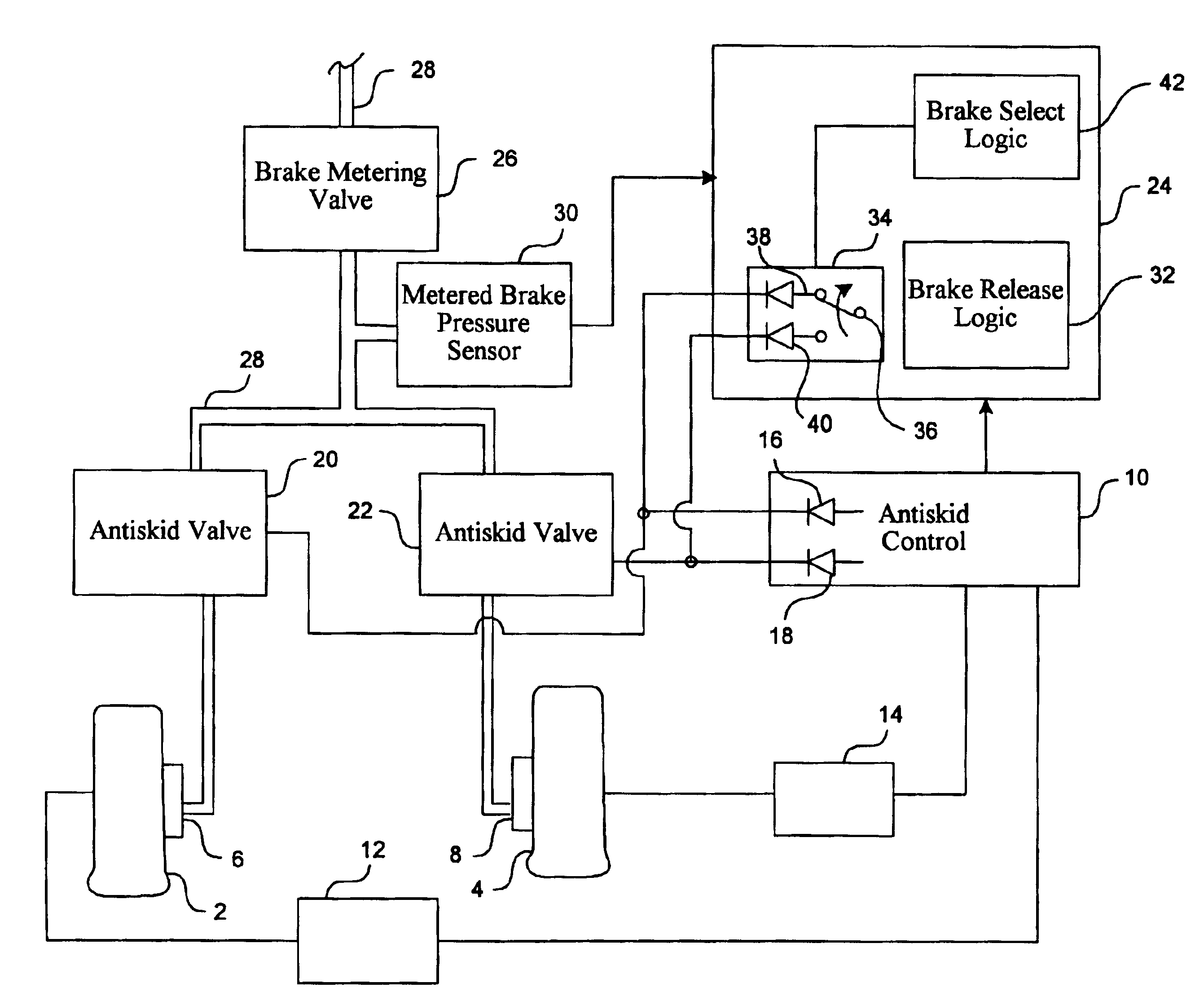Carbon brake wear for aircraft
a technology of carbon brakes and aircraft, applied in the direction of aircraft braking arrangements, automatic braking sequences, braking systems, etc., can solve the problems of significantly shortening the life of carbon brakes, reducing the cost of replacing the stack divided by the number of landing cycles between replacements, etc., to reduce the wear of carbon brakes, reduce the cost of replacement, and promote the effect of absorbing energy
- Summary
- Abstract
- Description
- Claims
- Application Information
AI Technical Summary
Benefits of technology
Problems solved by technology
Method used
Image
Examples
Embodiment Construction
[0010]For carbon brakes, the landings to wear-out ratio is strongly dependent on the number of brake applications rather than the energy absorbed by a brake during each application. For commercial passenger aircraft, the brakes may be applied an average of twenty times per landing cycle. The brakes are generally applied during landing absorbing several million foot-pounds for heavy wide-bodied aircraft and once to stop the wheels from spinning before they are retracted after take-off. Both of these are “high speed” brake applications, and are typically at moderate hydraulic pressures less than about 1500 psi hydraulic pressure. The balance of the brake applications are “taxi snubs” for steering or low speed braking. They create hydraulic brake fluid pressures generally less than about 1500 psi and absorb about 0.5 MFP average per snub for wide-bodied aircraft. These taxi snubs account for a significant amount of brake energy temperature buildup, and for carbon brakes, most of the we...
PUM
 Login to View More
Login to View More Abstract
Description
Claims
Application Information
 Login to View More
Login to View More - R&D
- Intellectual Property
- Life Sciences
- Materials
- Tech Scout
- Unparalleled Data Quality
- Higher Quality Content
- 60% Fewer Hallucinations
Browse by: Latest US Patents, China's latest patents, Technical Efficacy Thesaurus, Application Domain, Technology Topic, Popular Technical Reports.
© 2025 PatSnap. All rights reserved.Legal|Privacy policy|Modern Slavery Act Transparency Statement|Sitemap|About US| Contact US: help@patsnap.com



